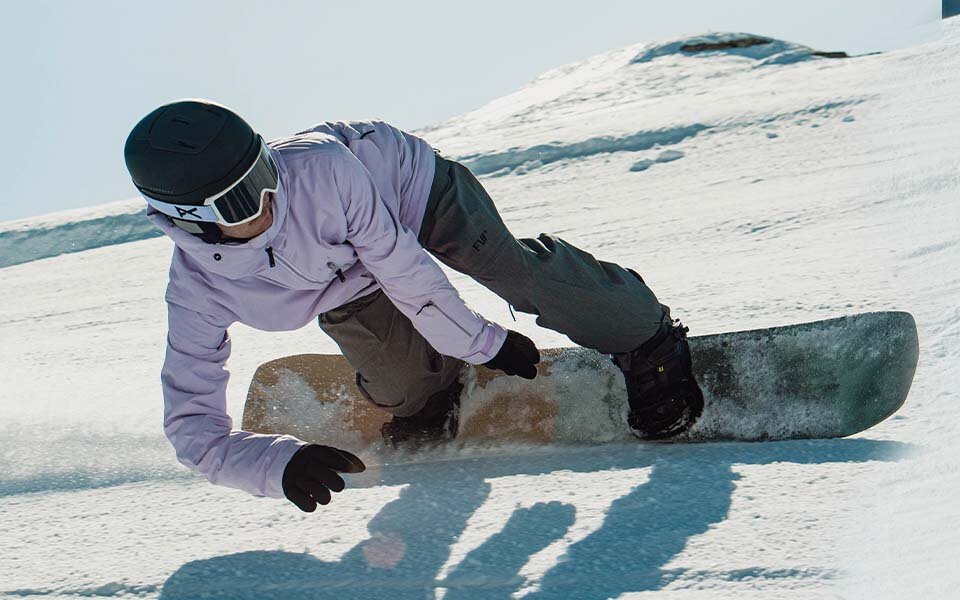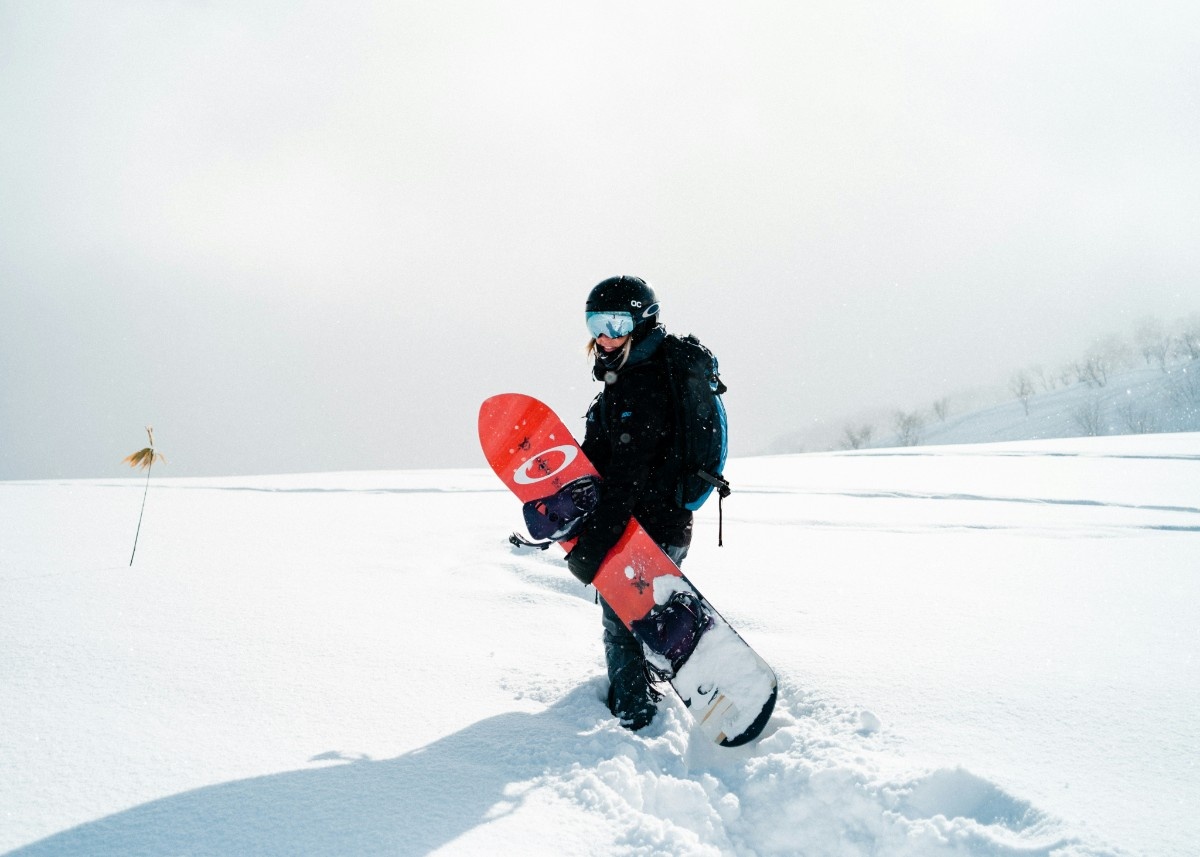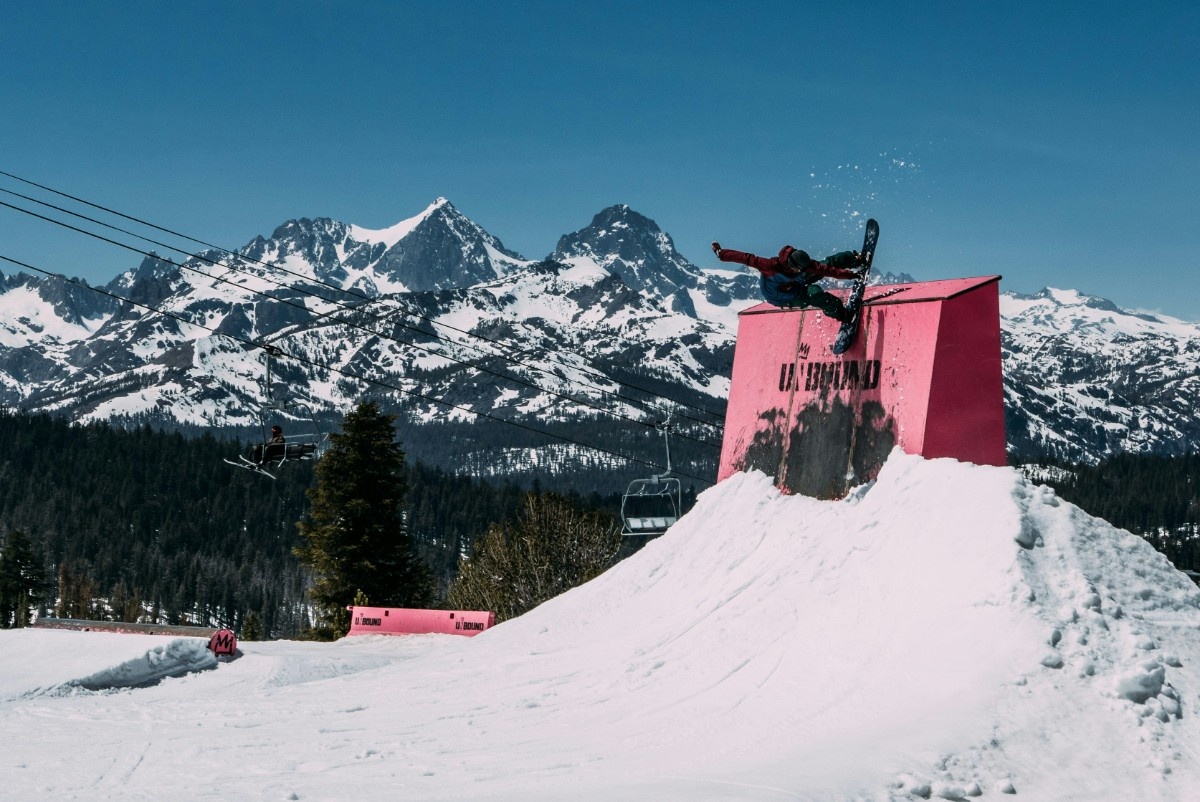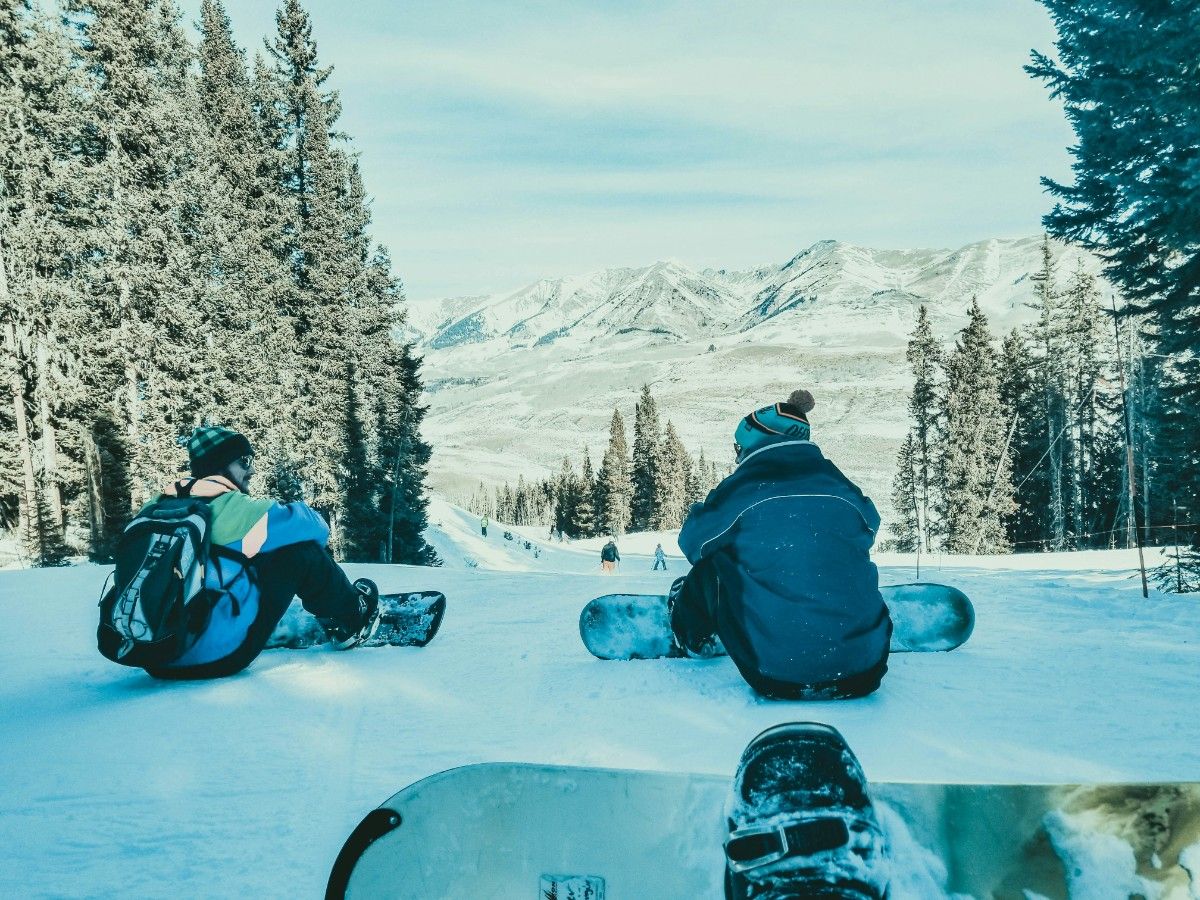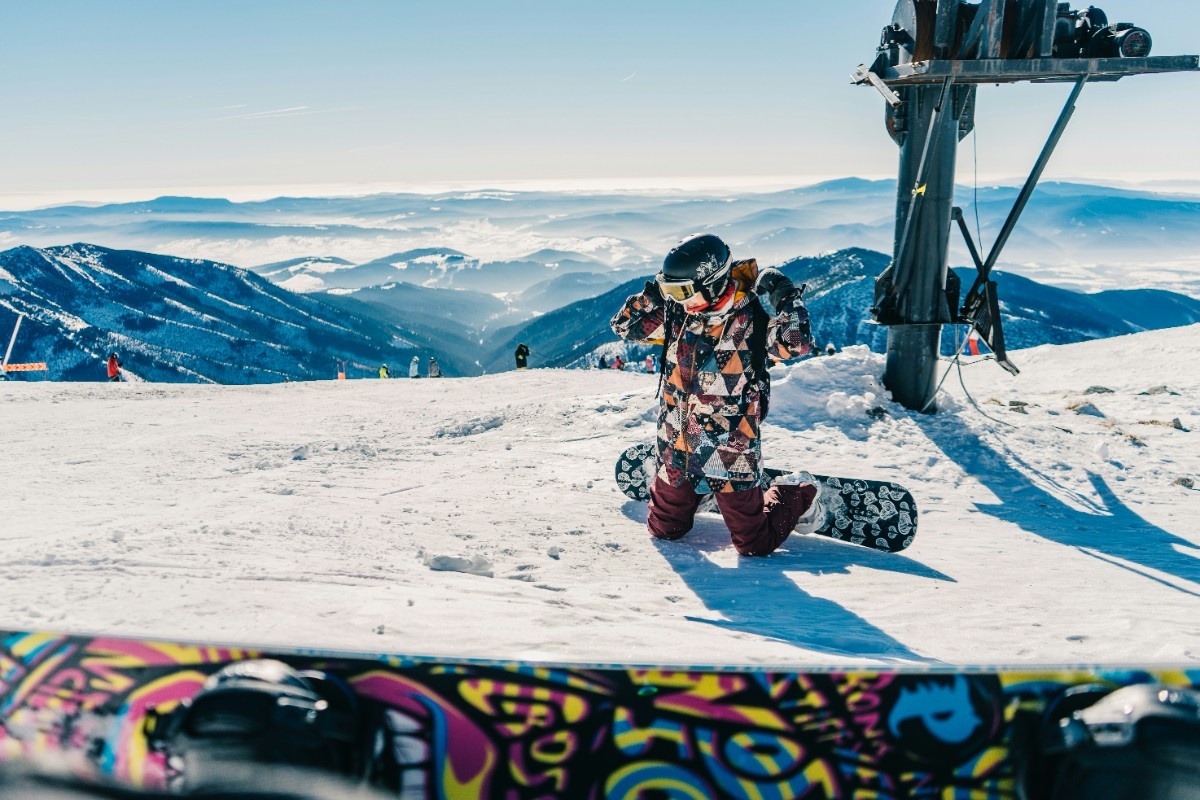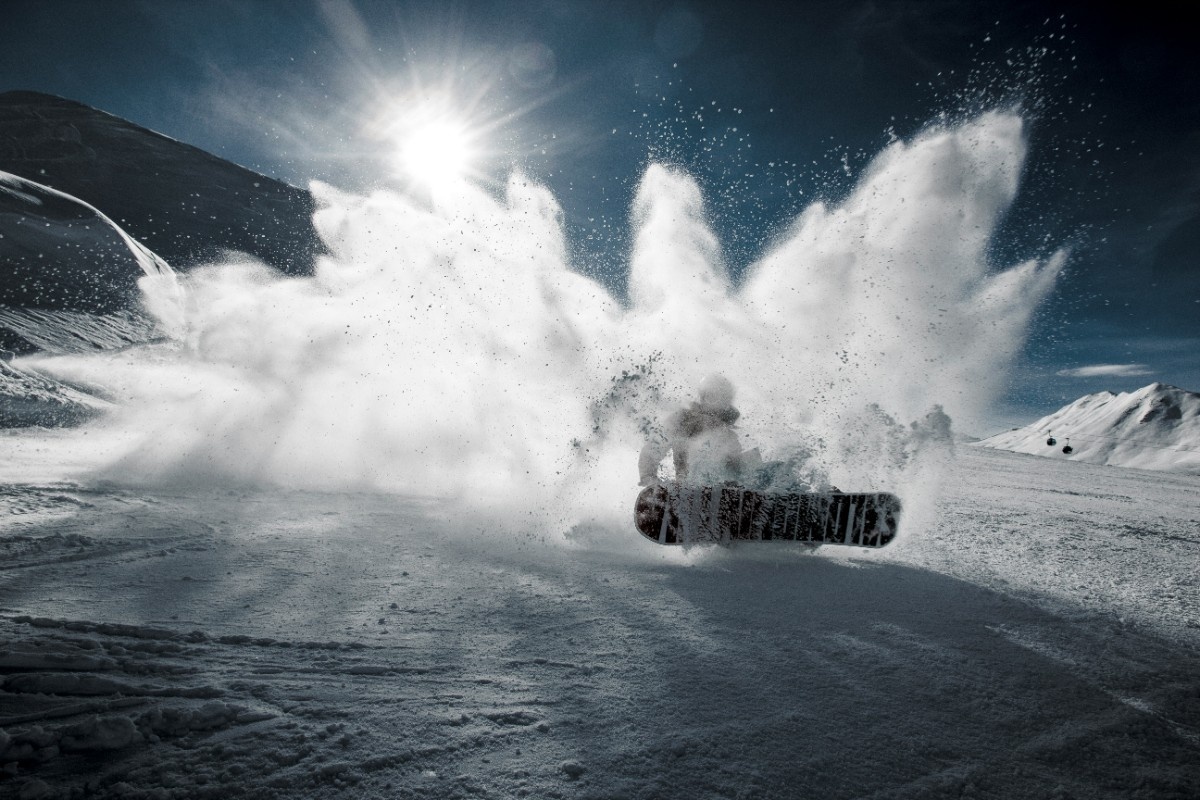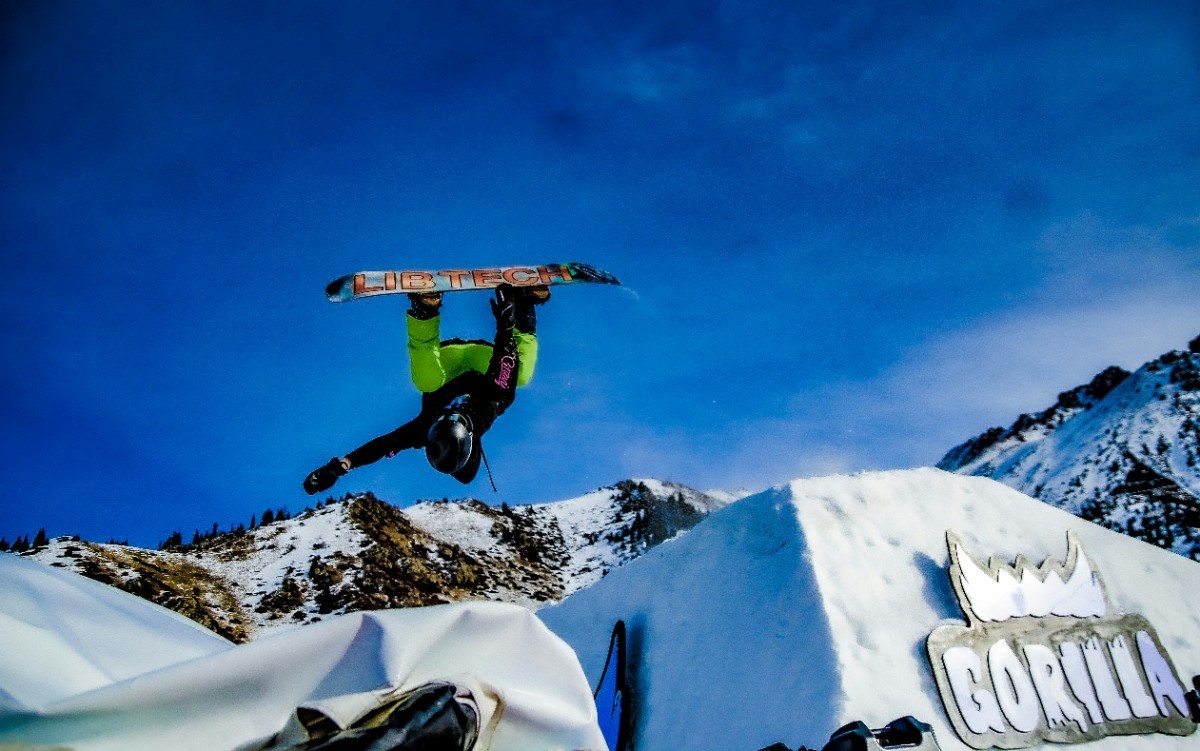Snowboarding
The Origins and Evolution of Snowboarding
Early Beginnings: From Snurfer to Snowboard
The story of snowboarding begins in the 1960s, but the concept of sliding sideways on snow has roots that stretch back much further. Indigenous peoples in various snowy regions worldwide have used similar techniques for transportation and recreation for centuries. However, the modern snowboard as we know it today traces its lineage to 1965, when Sherman Poppen, an engineer from Muskegon, Michigan, created the "Snurfer" for his daughters. This primitive snowboard was essentially two skis bound together with a rope attached to the nose for steering. The Snurfer gained popularity as a toy, selling over half a million units in the following decade.
The 1970s saw several innovators developing their own versions of the snowboard. Jake Burton Carpenter, Tom Sims, and Dimitrije Milovich were among the pioneers who contributed significantly to the sport's evolution. Jake Burton, in particular, played a crucial role in transforming snowboarding from a backyard hobby into a mainstream winter sport. He founded Burton Snowboards in 1977, which would go on to become one of the most influential companies in the industry.
During this period, the design of snowboards began to diverge from their ski-like origins. Early boards were often handmade and lacked the refined features of modern snowboards. Experimentation with materials, shapes, and binding systems led to rapid advancements in design and performance. The introduction of high-back bindings and metal edges significantly improved control and manoeuvrability on the slopes.
Gaining Recognition: Snowboarding Enters the Mainstream
The 1980s marked a period of significant growth and recognition for snowboarding. Initially, many ski resorts were resistant to allowing snowboarders on their slopes. Concerns about safety and the perceived rebellious nature of snowboarders led to widespread bans. However, as the sport grew in popularity and snowboarders demonstrated their ability to coexist with skiers, more resorts began to open their slopes to riders.
This decade also saw the emergence of the first snowboarding competitions. The National Snowboarding Championships, later known as the US Open Snowboarding Championships, was first held in 1982 at Suicide Six in Vermont. These early competitions helped to legitimise the sport and provided a platform for riders to showcase their skills.
The 1990s marked a turning point for snowboarding. The sport gained international recognition with its inclusion in the 1998 Winter Olympics in Nagano, Japan. This legitimised snowboarding as a competitive sport and sparked a surge in its popularity worldwide. The Olympic debut featured giant slalom and halfpipe events, showcasing both the racing and freestyle aspects of snowboarding.
Modern Era: Innovation and Specialisation
As snowboarding entered the 21st century, it continued to evolve and diversify. New disciplines emerged, such as slopestyle and big air, which were later added to the Olympic programme. Technological advancements in snowboard design, including the development of rocker profiles and hybrid camber designs, have made the sport more accessible to beginners while allowing advanced riders to push the boundaries of what's possible on a snowboard.
The evolution of snowboarding gear has been equally impressive. From the early days of makeshift bindings and rudimentary boards, we now have highly specialised equipment for various riding styles and conditions. Modern snowboards are technological marvels, incorporating advanced materials like carbon fibre and utilising complex design features to optimise performance.
Snowboard boots have also come a long way. Early riders often used modified ski boots or even work boots. Today's snowboard boots are purpose-built, offering a balance of comfort, support, and responsiveness. The development of BOA lacing systems and heat-moldable liners has further enhanced the fit and performance of snowboard boots.
Snowboard bindings have seen similar advancements. From simple strap systems, we now have a variety of binding types, including step-in bindings that offer quick and easy entry. High-back designs have been refined to provide optimal support and control, while materials like aluminium and carbon fibre have reduced weight without sacrificing durability.
As we look to the future, snowboarding continues to evolve. Sustainable manufacturing practices are becoming increasingly important, with many brands focusing on reducing their environmental impact. Electric snowboards and artificial snow technologies are emerging as potential solutions to the challenges posed by climate change. The story of snowboarding is one of innovation, perseverance, and passion, and its journey from a backyard invention to a global sport continues to inspire and excite winter sports enthusiasts around the world.
Essential Snowboarding Gear and Equipment
The Snowboard: Heart of Your Setup
At the core of every snowboarder's kit is, of course, the snowboard itself. Modern snowboards come in a variety of shapes and sizes, each designed for specific riding styles and conditions. All-mountain boards are versatile and suitable for riding in various terrains. Freestyle boards are typically shorter and more flexible, ideal for tricks and park riding. Freeride boards are designed for off-piste adventures, with features that enhance performance in powder snow.
When choosing a snowboard, several factors come into play. The length of the board should generally reach somewhere between your chin and nose when stood on end. However, this can vary depending on your riding style and ability level. The width of the board is also crucial - your boots should hang slightly over the edges of the board, but not so much that they drag in the snow when turning.
The shape of the snowboard affects its performance characteristics. Traditional camber boards have an upward curve in the middle, providing excellent edge hold and pop for jumps. Rocker boards, also known as reverse camber, have a banana-like shape that enhances float in powder and forgiveness for beginners. Hybrid profiles combine elements of both camber and rocker to offer a balance of performance features.
The construction of a snowboard is a complex process involving multiple layers of materials. The core is typically made of wood, often a combination of different types to provide the right balance of strength, flex, and weight. This is sandwiched between layers of fibreglass for added strength and responsiveness. The base of the board is made of a plastic material called P-tex, which is designed to slide smoothly on snow and absorb wax for improved glide.
Bindings: The Crucial Link
Snowboard bindings are the crucial link between your boots and the board. They come in two main types: strap bindings and step-in bindings. Strap bindings are the most common and consist of adjustable straps that secure your boot to the binding. Step-in bindings allow for quicker entry and exit but are less common and require specific compatible boots.
When selecting snowboard bindings, consider the flex rating. Softer flexing bindings are more forgiving and better suited for beginners and freestyle riders. Stiffer bindings offer more responsive control, preferred by advanced riders and those who enjoy carving or riding at high speeds.
The highback is an important component of the binding, providing support and leverage for turning. Some bindings feature adjustable highbacks, allowing you to fine-tune the forward lean for your preferred riding style. The baseplate of the binding is another crucial element, transferring your movements to the board. Many modern bindings use lightweight materials like aluminium or high-grade plastics to reduce overall weight without sacrificing durability.
Mounting systems for snowboard bindings have also evolved. Most boards use a standardised 4x4 or 2x4 mounting pattern, but some brands have proprietary systems designed to enhance board feel and adjust stance options. When setting up your bindings, pay attention to your stance width and angles. These can significantly affect your comfort and performance on the board.
Boots: Comfort and Control
Snowboard boots are perhaps the most critical component of your setup in terms of comfort and performance. A good pair of snowboard boots should fit snugly without causing pressure points or discomfort. They should provide adequate support for your ankles and allow for a responsive connection to your board through the bindings.
Boot flex is an important consideration. Like bindings, snowboarding boots range from soft to stiff. Softer boots are more comfortable and forgiving, ideal for beginners and freestyle riders. Stiffer boots offer more support and responsiveness, suitable for aggressive all-mountain riding and carving.
Many modern snowboard boots feature heat-moldable liners that can be customised to fit your feet perfectly. This process involves heating the liner and then wearing the boot while it cools, allowing it to conform to the shape of your foot. Some boots also incorporate BOA lacing systems, which allow for quick and easy adjustment of the boot's fit with the turn of a dial.
The outer shell of snowboarding boots is typically made of synthetic materials designed to withstand the harsh winter environment. Many boots feature reinforced areas around the toe and heel for added durability. The sole of the boot is usually made of rubber with a tread pattern designed to provide traction when walking on snow and ice.
Outerwear: Staying Warm and Dry
Proper clothing is essential for staying comfortable and protected on the mountain. A good snowboard jacket is a crucial piece of outerwear. Look for jackets that are waterproof and breathable to keep you dry from both external moisture and sweat. Insulation is important for warmth, but many riders prefer shell jackets that allow for layering underneath to adapt to changing conditions.
Key features to look for in a snowboard jacket include a powder skirt to keep snow out, ventilation zips for temperature regulation, and plenty of pockets for storing essentials. Some jackets also include built-in features like goggle wipes and pass holders.
Snowboard trousers, often referred to as pants in North America, are equally important. Like jackets, they should be waterproof and breathable. Many riders prefer bib-style trousers for extra protection against snow ingress. Look for reinforced knees and seat areas for durability, as well as venting options and plenty of pockets.
Layering is crucial for maintaining comfort throughout the day. Start with a moisture-wicking base layer to keep sweat away from your skin. Add an insulating mid-layer, such as a fleece or down jacket, for warmth. The outer layer (your snowboard jacket and trousers) then provides protection from the elements.
Essential Accessories
A good pair of snowboard gloves or mittens is essential for keeping your hands warm and dry. Look for gloves with waterproof shells and insulation. Some gloves include features like touchscreen-compatible fingertips and wrist leashes.
Snowboard goggles protect your eyes from glare, wind, and flying snow. They come in various lens tints suited for different light conditions. Many modern goggles feature interchangeable lenses, allowing you to adapt to changing weather. Look for goggles with anti-fog coatings and good ventilation to maintain clear vision.
A snowboard helmet is a crucial safety item. Modern helmets are lightweight and comfortable, with many incorporating ventilation systems to regulate temperature. Some helmets are compatible with audio systems, allowing you to listen to music while you ride. Always ensure your helmet fits properly and meets current safety standards.
Other essential accessories include thermal socks, which provide warmth and cushioning, and a neck gaiter or balaclava for face protection in cold conditions. Many riders also wear impact protection, such as padded shorts and wrist guards, especially when learning or pushing their limits in the terrain park.
Remember, while having the right gear is important, it's not everything. The most crucial factors in enjoying snowboarding are developing your skills, staying safe, and having fun on the mountain. In the next sections, we'll explore the fundamental techniques that form the foundation of snowboarding, from your first turns to more advanced manoeuvres.
Mastering the Basics: Snowboarding Techniques and Skills
Getting Started: Stance and Balance
Before you even strap into your snowboard, it's crucial to understand your stance. There are two types of snowboarding stances: regular and goofy. Regular riders lead with their left foot forward, while goofy riders have their right foot forward. To determine your natural stance, try sliding across a smooth floor in your socks - the foot you naturally put forward is likely your lead foot.
Once you've determined your stance, it's time to get familiar with your equipment. Start by learning how to properly strap into your snowboard bindings. Place your lead foot in first, ensuring your boot is centred in the binding. Tighten the ankle strap first, followed by the toe strap. Your rear foot should be easy to slip in and out of the binding quickly.
Balance is the foundation of all snowboarding techniques. When standing on your board, your weight should be evenly distributed between both feet, with your knees slightly bent and your upper body relaxed. Your shoulders should be in line with your snowboard, and your arms should be loose at your sides. This balanced stance will help you maintain control as you start to move on the snow.
As you begin to slide, focus on keeping your weight centred over the board. Avoid leaning too far forward or backward, as this can cause you to catch an edge and fall. Instead, think about pressing down evenly with both feet, using your ankles, knees, and hips to absorb any bumps or changes in terrain.
One of the first skills you'll need to master is the 'falling leaf' technique. This involves sliding sideways down the slope, alternating between your toe edge and heel edge. To start, find a gentle slope and strap in with your board perpendicular to the fall line (the most direct path down the slope). Practice shifting your weight from your toes to your heels and back again, feeling how this affects your movement across the slope.
Remember, falling is a natural part of learning to snowboard. Learn to fall safely by tucking your arms in and rolling with the fall rather than trying to catch yourself with outstretched hands. Wearing protective gear like wrist guards and a snowboard helmet can help prevent injuries as you're learning.
Mastering Edge Control
Edge control is the key to steering and stopping on a snowboard. Your board has two edges: the toe edge (where your toes point) and the heel edge (where your heels are). Learning to engage and release these edges is crucial for controlling your speed and direction.
To engage your toe edge, lift your heels and press down with your toes, as if you're trying to squeeze a tube of toothpaste with your feet. This will cause the toe edge of your board to dig into the snow, slowing you down or turning you in the direction your toes are pointing. For heel edge control, do the opposite - lift your toes and press down with your heels.
Practice transitioning between your toe and heel edges on a gentle slope. Start by sliding sideways with your board across the fall line. Gradually shift your weight onto your toe edge, allowing the board to turn downhill. Once you're pointing down the fall line, shift your weight to your heel edge to bring the board back across the slope. This C-shaped turn is the foundation for more advanced turning techniques.
As you become more comfortable with edge control, try linking these C-turns together to create S-shaped turns down the slope. Remember to keep your knees bent and your upper body aligned with your board throughout the turn. Your head and shoulders should lead the turn, with your lower body following.
Turning Techniques
Once you've mastered basic edge control, it's time to learn how to make proper turns. Turning on a snowboard involves transitioning from one edge to the other. Start by traversing the slope on your heel edge. As you gain some speed, shift your weight onto your front foot and rotate your upper body downhill. Allow the nose of your board to point down the fall line.
As the board flattens, quickly shift your weight to your toe edge by pressing down with your toes and lifting your heels. Continue to rotate your upper body in the direction of the turn. Once you've completed the turn, you'll be travelling across the slope on your toe edge.
To complete a heel-side turn, repeat the process in reverse. Shift your weight to your front foot, rotate your upper body downhill, and then quickly transition to your heel edge by pressing down with your heels and lifting your toes.
Practice linking turns on gentle slopes before progressing to steeper terrain. Remember to keep your knees bent, your arms relaxed, and your eyes looking ahead to where you want to go. As you become more comfortable with basic turns, you can start to refine your technique. Focus on using your lower body to initiate turns rather than relying solely on upper body rotation. This involves subtle movements of your ankles, knees, and hips to guide the board through the turn.
Advanced Techniques: Carving and Freestyle Basics
Carving is an advanced turning technique that involves using the sidecut of your snowboard to create smooth, precise turns without skidding. To carve, you need to tilt your board onto its edge and allow the sidecut to guide you through the turn. This requires a higher edge angle and more precise weight distribution than basic turns.
To initiate a carve, start by traversing the slope at a moderate speed. Gradually increase the edge angle by tilting your entire body towards the inside of the turn. Keep your weight centred over the board and allow the sidecut to guide you through a smooth arc. Carving requires a good understanding of edge control and weight distribution. It's a skill that takes time to master but can greatly enhance your speed and efficiency on the slopes.
For those interested in freestyle snowboarding, learning to ride switch (with your non-dominant foot forward) is crucial. Start practicing switch riding on gentle slopes, applying the same principles you learned for your regular stance. Being comfortable riding switch is essential for performing many freestyle tricks and can also be useful in navigating tricky terrain.
Basic freestyle skills include ollies (jumping with your board), 180-degree rotations, and simple grabs. To ollie, shift your weight to your back foot, then quickly pop off your back foot while sliding your front foot forward to level out the board. For 180s, wind up your upper body in the opposite direction of the spin, then release and rotate as you leave the ground. Grabs involve reaching down and grasping the edge of your board while in the air - start with simple grabs like Indy (between your feet on your toe edge) or Mute (between your feet on your heel edge).
Remember, progression in snowboarding is all about practice and gradually pushing your comfort zone. Don't be afraid to fall - it's a natural part of the learning process. Always prioritise safety and consider taking lessons from a qualified instructor to accelerate your progress and ensure you're developing good habits.
Exploring Different Snowboarding Styles and Disciplines
All-Mountain Snowboarding
All-Mountain snowboarding is perhaps the most versatile style, encompassing riding on groomed runs, off-piste areas, and even venturing into the terrain park. All-mountain riders need to be adaptable, capable of handling a variety of snow conditions and terrain types. This style is great for those who enjoy exploring the entire mountain and don't want to limit themselves to one specific area.
All-mountain snowboards are designed to perform well in various conditions. They typically have a directional shape, meaning they're designed to be ridden primarily in one direction, but can handle switch riding when needed. These boards often feature a medium flex, providing a balance between stability at speed and manoeuvrability for tricks.
When riding all-mountain, you'll encounter a variety of terrain and snow conditions. On groomed runs, focus on carving techniques and maintaining speed through your turns. In choppy or uneven snow, use your knees as shock absorbers and try to maintain a rhythm through the bumps. When venturing off-piste, you may need to adjust your technique for deeper snow, leaning back slightly to keep the nose of your board up.
All-mountain riding also involves navigating different types of lifts and terrain features. Practice your one-foot riding skills for navigating lift queues and exit ramps. Learn to read the mountain and choose appropriate lines based on your skill level and the current conditions.
As you progress in all-mountain riding, you can start to incorporate more advanced techniques. Learn to use natural features of the mountain for small jumps and tricks. Practice switch riding on easier runs to improve your versatility. Experiment with different turn shapes and sizes, from quick short-radius turns in tight spaces to long, arcing carves on wide-open groomers.
Freeride Snowboarding
Freeride snowboarding focuses on riding natural, ungroomed terrain. This can include deep powder snow, steep chutes, tree runs, and natural features like cliffs and gullies. Freeriders often seek out the most challenging and exciting lines on the mountain, prioritising fluid, powerful turns and sometimes incorporating natural jumps and drops.
Freeride snowboards are typically longer and stiffer than all-mountain boards, providing better float in powder and more stability at high speeds. They often have a pronounced directional shape and a setback stance, which helps keep the nose up in deep snow. Many freeride boards also feature rocker profiles in the nose for improved powder performance.
Riding in powder requires a slight adjustment to your technique. Keep your weight shifted towards the back of the board to keep the nose up and prevent it from diving. Make wider, more sweeping turns to maintain speed in the deep snow. In steep terrain, use rapid short-radius turns to control your speed, always looking ahead to plan your line.
Tree riding is a challenging aspect of freeriding that requires quick reflexes and precise control. Keep your knees bent and ready to absorb impacts, and always look for the spaces between trees rather than focusing on the trees themselves. Maintain a centred stance and be prepared to make quick edge changes to navigate through tight spaces.
Safety is paramount in freeride snowboarding, especially when venturing into backcountry terrain. Always check local avalanche forecasts and carry appropriate safety gear, including an avalanche beacon, shovel, and probe. Consider taking an avalanche safety course to learn how to assess risks and perform rescues if necessary.
Freestyle Snowboarding
Freestyle snowboarding is all about tricks, creativity, and self-expression. This style encompasses everything from jibbing (riding on non-snow surfaces like rails and boxes) to big air jumps and halfpipe riding. Freestyle snowboarding has its roots in skateboarding culture and shares many similarities in terms of trick vocabulary and style.
Freestyle snowboards are typically shorter and more flexible than other types, allowing for easier manipulation in the air and on features. They're usually true twin in shape, meaning they're symmetrical and perform identically whether ridden regular or switch. Many freestyle boards also feature a centred stance for balanced performance when riding switch or landing tricks.
Park riding is a significant component of freestyle snowboarding. Terrain parks feature a variety of man-made features including jumps, rails, boxes, and halfpipes. When approaching a jump, maintain a stable, centred stance and pop off both feet. Keep your eyes focused on your landing and use your arms for balance and style in the air.
Rail and box riding requires precise balance and edge control. Approach the feature with a flat-based board and ollie onto it, landing with your weight centred and your board parallel to the rail or box. Keep your knees bent and use subtle adjustments of your ankles and hips to maintain balance as you slide.
Halfpipe riding is a specialised form of freestyle that involves riding up and down the walls of a U-shaped snow structure, performing tricks at the lip. Maintaining speed is crucial in the halfpipe. As you ride up the wall, shift your weight to your front foot and look up towards the lip. As you reach the lip, shift your weight back, allowing the tail of your board to clear the lip for your trick.
Learning freestyle skills requires patience and often involves a lot of falls. Always wear appropriate protective gear, including a snowboard helmet and impact protection. Start small and gradually work your way up to larger features as your skills and confidence improve.
Alpine and Racing Snowboarding
Alpine snowboarding, also known as carving or race snowboarding, focuses on making precise, high-speed turns on groomed runs. This style of riding uses hard boots (similar to ski boots) and narrow, stiff boards with sharp edges. Alpine snowboarding is less common than other styles but has a dedicated following, particularly in racing circles.
Alpine snowboards are significantly different from other snowboards. They're typically much narrower, with a more extreme sidecut for tighter turns. The snowboard bindings are mounted with more extreme angles, often approaching 90 degrees to the board's length. This setup allows for very high edge angles and precise control, but sacrifices versatility and freestyle performance.
Carving on an alpine setup requires a different technique than on a conventional snowboard. Riders adopt a much more upright stance, with their hips and shoulders aligned more closely with the direction of travel. Turns are initiated by rolling the board onto its edge and allowing the sidecut to guide the turn, with the rider's body following the arc of the turn.
Racing is a key aspect of alpine snowboarding. Disciplines include giant slalom, slalom, and super-G. These events involve navigating a course marked by gates, with the fastest time winning. Racing requires not only technical skill but also tactical awareness, as riders must choose the fastest line through the course while maintaining control at high speeds.
Snowboard cross, also known as boardercross, is another racing discipline that has gained popularity in recent years. This event involves multiple riders racing head-to-head down a course featuring turns, jumps, and other obstacles. Snowboard cross became an Olympic sport in 2006 and combines elements of alpine racing with freestyle skills.
Whether you're drawn to the precision of alpine carving, the creativity of freestyle, the adventure of freeriding, or the versatility of all-mountain riding, there's a snowboarding style to suit every rider. As you progress in your snowboarding journey, don't be afraid to explore different disciplines and find the style that resonates most with you.
The Culture and Lifestyle of Snowboarding
Origins and Evolution of Snowboarding Culture
Snowboarding is more than just a sport - it's a culture, a lifestyle, and for many, a way of life. The origins of snowboarding culture can be traced back to its early days in the 1960s and 1970s. Unlike skiing, which had been established for decades and was associated with a more formal, traditional winter sports crowd, snowboarding emerged as a rebellious alternative. Early snowboarders were often seen as outsiders, banned from many ski resorts and forced to forge their own path.
This outsider status fostered a strong sense of community among early snowboarders. They shared a common passion and a desire to push boundaries, both in terms of what was possible on a snowboard and in challenging the established norms of winter sports culture. This rebellious spirit remains an integral part of snowboarding culture today, even as the sport has gained mainstream acceptance.
The influence of skateboarding on snowboarding culture cannot be overstated. Many early snowboarders were skateboarders looking for a way to continue their passion during the winter months. This connection brought elements of street culture, DIY ethos, and creative self-expression into the world of snowboarding.
As snowboarding grew in popularity through the 1980s and 1990s, it developed its own distinct identity. Snowboarders were known for their laid-back attitude, distinctive style of dress, and appreciation for alternative music. The sport attracted a younger demographic than traditional skiing, and ski resorts began to change their image and offerings to cater to this new crowd.
Today, snowboarding culture continues to evolve. While it has become more mainstream and commercialised over the years, it still retains much of the rebellious, creative spirit that defined its early years. The culture now encompasses a diverse range of subcultures, from backcountry enthusiasts to urban rail riders, each with their own unique style and ethos.
Fashion and Style in Snowboarding
Snowboarding has had a significant impact on winter sports fashion. The baggy clothing style that became popular among snowboarders in the 1990s was a stark contrast to the tight-fitting ski wear of the time. This style was not just about looks - the loose-fitting clothing allowed for greater freedom of movement, essential for pulling off tricks and manoeuvres.
Today, snowboarding fashion continues to evolve. While some riders still prefer a baggier look, many have adopted a more fitted style. Technical advancements in fabric and design have led to snowboarding outerwear that combines style with high-performance features. Snowboard jackets and snowboarding jackets are now designed to be both functional and fashionable, with features like powder skirts, ventilation zips, and multiple pockets integrated seamlessly into stylish designs.
Snowboard trousers have also seen significant evolution. From the ultra-baggy styles of the past, modern snowboard trousers come in a variety of fits to suit different preferences. Many riders now opt for articulated knees and stretch fabrics for improved mobility, without sacrificing the waterproof and breathable properties essential for comfort on the mountain.
Accessories like snowboard gloves and snowboard goggles have become style statements in their own right. Goggles, in particular, have seen a trend towards larger sizes and more vibrant colours, often coordinated with the rest of the rider's outfit.
Many snowboarding clothing brands have also gained popularity as streetwear, further blurring the lines between on-slope and off-slope fashion. This crossover has led to a distinctive snowboarding lifestyle aesthetic that extends beyond the mountain, influencing fashion trends in wider youth culture.
Music and Media in Snowboarding Culture
Music has always been closely tied to snowboarding culture. In the early days, punk and hardcore were popular genres among riders. As the sport evolved, so did its musical tastes, embracing hip-hop, electronic music, and indie rock. Many professional snowboarders have close ties to the music industry, and it's not uncommon to see musicians embracing snowboarding as part of their lifestyle.
Snowboarding films have played a crucial role in shaping the culture of the sport. Unlike traditional ski movies, which often focused on racing or extreme skiing, snowboarding films embraced a more creative, artistic approach. These films showcased not just the riding, but the lifestyle and personalities of the riders, set to carefully curated soundtracks.
The advent of action cameras and social media has democratised the creation and distribution of snowboarding content. Now, anyone with a smartphone can capture and share their riding experiences, leading to a proliferation of user-generated content that continues to shape and evolve snowboarding culture.
Snowboarding has its own unique language, a mix of technical terms and slang that can be bewildering to outsiders. Terms like "goofy," "fakie," "stoked," and "shredding" are part of the everyday vocabulary of snowboarders. This shared language helps to foster a sense of community and identity among riders.
Community and Lifestyle
The snowboarding community is known for its inclusivity and camaraderie. Whether you're riding your local hill or exploring backcountry terrain in a far-flung location, you're likely to find a welcoming community of fellow snowboarders. This sense of community extends beyond the slopes, with many riders forming lifelong friendships through their shared passion for the sport.
Many snowboarders structure their lives around the sport, choosing to live in mountain towns or arranging their work schedules to maximise their time on the snow. Some even adopt a nomadic lifestyle, chasing winter around the globe to enjoy year-round snowboarding.
Environmental consciousness is an increasingly important aspect of snowboarding culture. As riders who depend on natural snowfall and pristine mountain environments, many snowboarders are acutely aware of the threats posed by climate change. This has led to a growing movement within the snowboarding community to promote sustainability and environmental protection.
Many snowboard manufacturers are now prioritising sustainable production methods and materials. This includes using recycled materials in boards and outerwear, reducing waste in the manufacturing process, and offsetting carbon emissions. Some brands have gone even further, becoming vocal advocates for environmental causes and using their platforms to raise awareness about climate change.
Progressing Your Snowboarding Journey: From Novice to Expert
Continuous Learning and Skill Development
No matter where you are in your snowboarding journey, there's always room for growth and improvement. Continuous learning is key to progression in snowboarding. Even if you've been riding for years, there's always something new to learn or a skill to refine.
One of the most effective ways to improve is through professional instruction. While many riders stop taking lessons once they've mastered the basics, advanced lessons can help you break through plateaus and take your riding to the next level. Consider booking a lesson or a series of lessons with a certified instructor. They can provide personalised feedback on your technique, help you identify areas for improvement, and introduce you to new skills and concepts.
Many resorts offer specialised clinics focusing on specific aspects of snowboarding, such as park riding, powder techniques, or carving. These can be excellent opportunities to focus on particular skills and learn from experienced riders.
Video analysis can be an incredibly useful tool for improving your snowboarding. Have a friend film you riding, or use a mounted action camera to capture footage of yourself. Watching yourself ride can help you identify issues with your technique that you might not feel while you're actually on the board. Many snowboard instructors now incorporate video analysis into their lessons, providing immediate visual feedback.
Physical Fitness and Off-Season Training
Physical fitness plays a crucial role in snowboarding progression. The better shape you're in, the longer you can ride and the more quickly you'll progress. Off-season training can help you stay in "snowboard shape" year-round.
Focus on exercises that improve core strength, leg power, and overall cardiovascular fitness. Squats, lunges, and plyometric exercises can help build the leg strength needed for powerful turns and jumps. Core exercises like planks and Russian twists can improve your balance and stability on the board.
Yoga and balance training can also be beneficial, enhancing your flexibility and proprioception. These skills are particularly useful for freestyle riders who need precise body control for tricks and jumps.
Cardio exercises like running, cycling, or swimming can help build the endurance needed for long days on the mountain. High-Intensity Interval Training (HIIT) can be particularly effective, mimicking the stop-and-go nature of a typical day of snowboarding.
Don't neglect upper body strength either. While snowboarding primarily engages the lower body, a strong upper body is important for maintaining proper form, especially when riding in challenging conditions or performing tricks.
Expanding Your Comfort Zone
Expanding your comfort zone is essential for progression in snowboarding. If you typically stick to groomed runs, challenge yourself to venture into some light off-piste terrain. If you're comfortable all over the mountain, maybe it's time to try your hand at some freestyle in the terrain park.
Remember to progress gradually and always prioritise safety. When trying new terrain or tricks, start small and work your way up. For example, if you're new to park riding, begin with small jumps and basic features before attempting larger jumps or more complex rails.
Travelling to different resorts can also aid your progression by exposing you to new terrain and conditions. Each mountain has its own unique characteristics, and riding a variety of resorts will make you a more well-rounded snowboarder. Consider planning a trip to a legendary snowboarding destination to challenge yourself and experience different snow conditions and terrain.
For those looking to push their boundaries further, backcountry snowboarding offers a new world of challenges and rewards. However, it's crucial to approach backcountry riding with respect and proper preparation. Take an avalanche safety course, invest in appropriate safety gear (including an avalanche beacon, shovel, and probe), and never venture into the backcountry alone or without proper knowledge of the conditions.
Specialisation and Competition
As you progress, you might find yourself drawn to a particular style of snowboarding. Specialising can be a great way to focus your progression and really excel in one area. Whether it's perfecting your carving technique, mastering big mountain lines, or pushing your limits in the terrain park, becoming an expert in a specific discipline can be incredibly rewarding.
Competing can be another way to challenge yourself and mark your progression. Even if you don't aspire to be a professional competitor, participating in local events can be a fun way to push your limits and connect with other riders. Many resorts host amateur competitions in various disciplines, from racing to freestyle events.
If you do have aspirations of competing at a higher level, start by participating in regional events and working your way up. Join a snowboarding team or club if possible, as this can provide structured training and opportunities to compete.
Related Articles

Let us know you agree to cookies
We use marketing, analytical and functional cookies as well as similar technologies to give you the best experience. Third parties, including social media platforms, often place tracking cookies on our site to show you personalised adverts outside of our website.
We store your cookie preferences for two years and you can edit your preferences via ‘manage cookies’ or through the cookie policy at the bottom of every page. For more information, please see our cookie policy.
